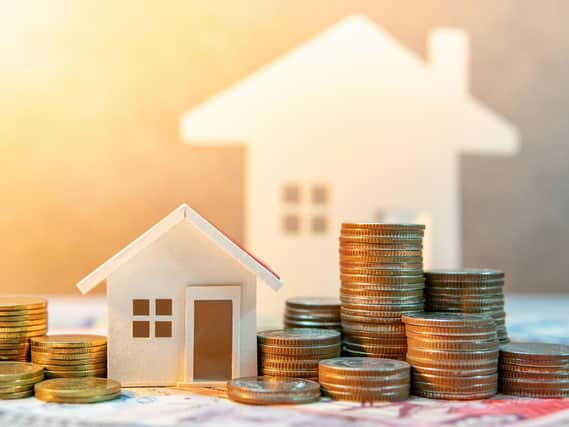Yorkshire and North West top the table in Zoopla's house price index with more growth forecast


Annual house price growth was up 5.4% in June, more than double the year-on-year growth recorded at the same time last year, according to Zoopla’s latest data. While Northern Ireland and Wales registered the UK’s highest increases with 8.6% and 8.4% respectively, the North West and Yorkshire topped England’s regional table.
House prices in the North West have shot up by 7.3% over the past year, while Yorkshire and the Humber recorded a 6.8% rise. Zoopla’s city index shows that Liverpool had the greatest growth in prices between June 2020 and June 2021 with 8.9%, followed by Belfast 7.7% and Manchester 7.4%. Sheffield was fourth in the table with a 7% gain and Leeds is in sixth with 6.1%.
Advertisement
Hide AdAdvertisement
Hide AdMeanwhile, in an unprecedented turn of events due to the pandemic-induced flight to the suburbs and the country, London trails with annual house price growth of just 2.3%. Zoopla says that pricing is being supported in part by a severe shortage of homes for sale. There has been a 25% fall in the number of homes on the market in the first half of the year compared to the same period in 2020.
Supply has now failed to keep pace with demand since January 2021, with no sign of a rebalance expected to play out imminently. Transaction volumes also show no signs of abating, with sales agreed running 22% ahead of average levels in 2020, though buyer demand dipped 9% in the first half of July after the initial stamp duty holiday ended, but overall remains elevated, up +80% compared to the average for this time of year.
Patrick McCutcheon, Head of Residential at Dacre, Son and Hartley estate agents says while there is likely to be a slight lull in property market activity over the summer, underlying demand will manifest itself in Autumn. Zoopla concur and say that the UK’s average house price growth is expected to edge upwards to 6% in the coming months before easing back towards the end of the year as the impact of the extended stamp duty holiday unwinds and the economic landscape becomes more challenging.
Demand for family houses is up 114% compared to normal market conditions while demand for all types of houses, from terraced to detached, has more than doubled. By contrast, demand for flats has failed to keep pace and, as a result, prices growth is lagging at just 1.4%, the same annual rate of growth seen last year. This is due to the flight from apartments with little or no outside space, which many found difficult during lockdowns. The cladding and building safety scandal has also played a part in making apartments a less attractive proposition.
Advertisement
Hide AdAdvertisement
Hide AdPrice growth for flats is highest in Scotland at 5.2% and East Midlands at 3.7% and weakest in London at -0.5% However, while inner London prices have lagged, evidence suggests it could regain momentum providing there are no further pandemic setbacks. Zoopla say the rental market has already bounced back, and the sales market is set to follow given its proximity to offices and amenities.
Grainne Gilmore, Head of Research, Zoopla, says: “Demand in the UK is moderating from record high levels earlier in the year, but remains significantly up from typical levels, signalling that above average activity levels will continue in the coming months.
“Demand for houses is still outstripping demand for flats. To a certain extent this trend will have been augmented by the stamp duty holiday, with bigger savings on offer for larger properties - typically houses. But underneath this, there is a continued drumbeat of demand for more space among buyers, both inside and outside, funnelling demand towards houses, resulting in stronger price growth for these properties..
”London has a two-speed market at present, with domestic demand driving price growth in the outer boroughs, while the lack of international business and leisure travel is affecting demand in the more global real estate markets towards the centre of London. As COVID progresses at different rates across the world, unrestricted travel may not resume for some time yet, but when it does, demand will start to pick up once more. Overall buyer demand coupled with constrained supply signal that price growth will continue to rise in the coming months, peaking at around 6%, before falling back to between 4%-5% by the end of 2021.”